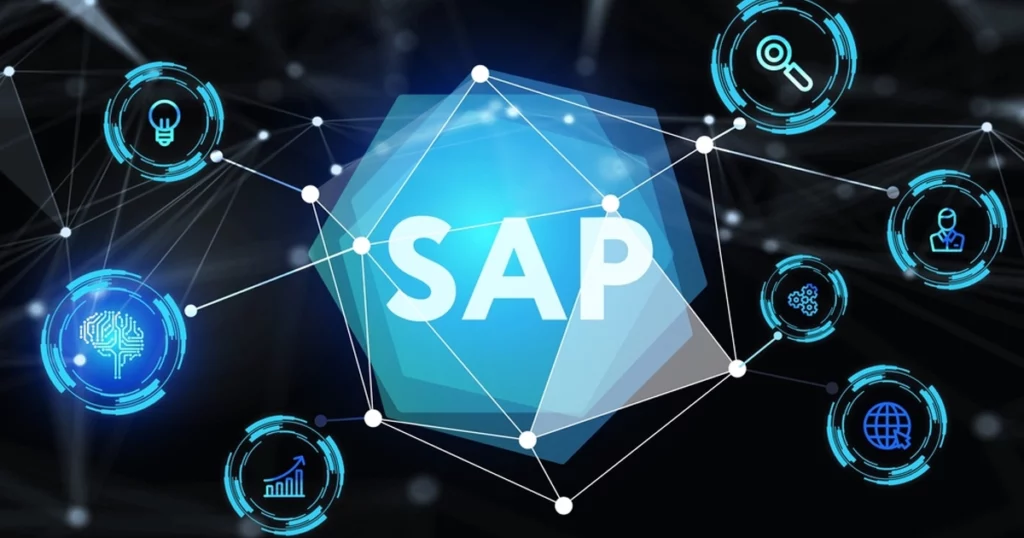In an era of unprecedented uncertainty and volatility, risk management has become an indispensable discipline for businesses striving to safeguard their success and longevity. As organizations encounter an increasingly complex landscape of risks, ranging from financial uncertainties to cybersecurity threats, the need for robust risk management strategies has never been more critical.
However, in the face of these challenges, there exists a powerful ally that can help organizations navigate the treacherous waters of risk with confidence and finesse. Enter SAP Application Management—an innovative suite of tools, processes, and methodologies designed to empower businesses to comprehend and manage risks effectively and transform them into opportunities for growth and resilience.
This blog aims to unravel the symbiotic relationship between risk management and SAP Application Management, shedding light on how this dynamic partnership can bolster organizations’ abilities to anticipate, respond to, and conquer risks in the ever-evolving business landscape.
Understanding Risks in SAP Applications
SAP applications are the backbone of many organizations, facilitating critical business processes, managing data, and enabling seamless integration across various departments. However, like any complex system, SAP applications are not immune to risks and vulnerabilities that can impact an organization’s overall stability and security.

Systemic Risks:
Any disruption or failure in one area of SAP can have a cascading effect, leading to system-wide issues and impacting business operations. Systemic risks may arise from software bugs, compatibility issues, or even inadequate infrastructure, potentially resulting in costly downtime, data loss, or compromised business continuity.
Data Security Risks:
SAP applications store vast amounts of sensitive data, including financial records, customer information, and intellectual property. This valuable data presents an attractive target for cybercriminals seeking to exploit system vulnerabilities.

Unauthorized access, data breaches, or insider threats pose significant risks to data confidentiality, integrity, and availability within SAP applications. The consequences can range from financial loss and regulatory non-compliance to reputational damage and loss of customer trust.

Compliance and Governance Risks:
Organizations operating in highly regulated industries face additional risks related to compliance and governance when it comes to SAP applications. Failure to adhere to industry-specific regulations, such as those governing data privacy, financial reporting, or environmental standards, can result in legal penalties, financial losses, and reputational harm.
Change Management Risks:
SAP applications undergo continuous updates, enhancements, and customizations to meet evolving business needs. However, better-managed changes can introduce risks into the system. Inadequate testing, documentation, or improper change control processes can lead to unintended consequences, including system failures, process disruptions, and compromised data integrity.


Vendor and Third-Party Risks:
Many organizations rely on external vendors and third-party service providers for SAP application management, support, or customization. However, entrusting critical systems and data to external parties introduces different risks. Issues such as vendor lock-in, lack of transparency, or inadequate service levels can undermine the organization’s control over its SAP applications, potentially impacting performance, security, and overall risk posture.
Why Is It Important To Tackle Risks in SAP Applications?
Therefore, overlooking or underestimating the significance of tackling risks can have far-reaching consequences that impact not only the stability and security of the SAP environment but also the organization’s overall success.
- Protecting Business Continuity: SAP applications are the lifeblood of many organizations, supporting essential functions such as finance, procurement, sales, and supply chain management. Any disruption or compromise to these systems can lead to significant operational downtime, hamper productivity, and disrupt the entire value chain.
- Safeguarding Data Integrity and Confidentiality: SAP applications store and process vast amounts of sensitive data, including financial records, customer information, and proprietary business data. Failure to address risks effectively exposes this valuable data to potential breaches, unauthorized access, or corruption. Protecting data integrity and confidentiality is crucial to comply with legal and regulatory requirements and to preserve the trust of customers, partners, and stakeholders.
- Mitigating Financial and Reputational Risks: Risks within SAP applications can result in financial losses, regulatory penalties, or legal liabilities. For instance, a data breach due to a vulnerability in the system can lead to legal consequences, economic damages, and reputational harm. By tackling risks, organizations can minimize the likelihood of such events, protect their financial interests, and maintain their reputation as trustworthy and responsible custodians of sensitive information.
- Enhancing Operational Efficiency: Risks within SAP applications can hinder operational efficiency and productivity. System failures, data inconsistencies, or inefficient processes can impede business operations and lead to costly delays. Addressing risks helps optimize the performance and reliability of SAP applications, ensuring smooth and efficient operations and enabling organizations to focus on their core competencies.
- Adhering to Compliance and Regulatory Obligations: Compliance with industry-specific regulations, such as data privacy laws, financial reporting standards, or industry-specific requirements, is crucial for organizations operating in various sectors. SAP applications support compliance by providing robust control mechanisms, audit trails, and data governance frameworks.

SAP Security Best Practices
When it comes to safeguarding SAP applications, implementing robust security measures is paramount. Organizations must adopt a proactive approach to protect their critical systems and sensitive data and maintain regulatory compliance.
- Role-Based Access Control (RBAC): Implementing RBAC is crucial to ensure that users have the appropriate level of access to perform their job functions within SAP applications. Assigning roles and permissions based on job responsibilities helps prevent unauthorized access and reduces the risk of data breaches or fraudulent activities. Regular reviews and audits of user access rights are essential to ensure access privileges align with job requirements.
- Regular System Patching and Updates: Keeping SAP systems up to date with the latest patches and updates is critical to address known vulnerabilities and protect against potential exploits. Regularly applying security patches helps to mitigate risks associated with software vulnerabilities and ensures that systems are equipped with the latest security enhancements.
- Encryption of Sensitive Data: Encrypting sensitive data stored within SAP applications adds a layer of protection, especially when data is in transit or at rest. Encryption helps safeguard information from unauthorized access and ensures that even if a breach occurs, the data remains secure and unusable to malicious actors.
- Logging and Monitoring: Enabling comprehensive logging and monitoring capabilities within SAP applications allows organizations to promptly detect and respond to security incidents. Monitoring user activities, system logs, and critical events helps identify suspicious behavior, potential breaches, or unauthorized access attempts.
- Regular Security Assessments: Regular security assessments, such as vulnerability scans and penetration testing, help identify potential vulnerabilities and weaknesses in the SAP environment. These assessments provide insights into areas that require attention and allow organizations to address vulnerabilities before malicious actors can exploit them.
- Employee Training and Awareness: Educating employees about security best practices and raising awareness about potential risks is crucial for maintaining a solid security posture. Regular training sessions on data protection, phishing awareness, and safe computing practices empower employees to make informed decisions and contribute to a culture of security within the organization.
Benefits of SAP Application Management Services for Risk Management
- Risk assessment and identification
SAP Application Management Services provide organizations with the expertise to conduct thorough risk assessments and identify potential vulnerabilities within the SAP landscape. Skilled professionals leverage their knowledge of SAP systems and security best practices to analyze the environment, identify weaknesses, and evaluate the impact of potential risks. By uncovering hidden threats and vulnerabilities, organizations can take proactive measures to mitigate them, reducing the likelihood of security incidents. - Real-time monitoring and remediation
Effective risk management requires continuous monitoring of SAP applications to promptly detect and respond to potential threats. SAP Application Management Services offer real-time monitoring capabilities, ensuring that security incidents and anomalies are swiftly identified and addressed. Skilled professionals monitor system logs, user activities, and critical events, enabling timely detection of suspicious behavior or unauthorized access attempts. This proactive approach allows for swift remediation, minimizing the impact of security incidents and reducing potential damage. - Backup and recovery
SAP Application Management Services encompass robust backup and recovery solutions, allowing organizations to restore critical SAP systems and data in the event of a disruption or data loss. Regular and reliable backups ensure that data is protected and can be quickly recovered in case of system failures, natural disasters, or cyberattacks. This mitigates the risk of data loss, minimizes downtime, and swiftly enables organizations to resume operations without significant disruptions.
Robust SAP Application Management Services By Diligent Global
Diligent Global’s SAP Application Management Services offer organizations a comprehensive solution to address risks and strengthen the security of their SAP environments. Our team of skilled professionals specializes in SAP systems and security, providing tailored risk assessments, real-time monitoring, remediation, and robust backup and recovery capabilities. With our expertise, organizations can proactively mitigate risks, ensure business continuity, and protect critical systems and data.
By partnering with Diligent Global, organizations gain access to a proactive approach to risk management. Our team identifies vulnerabilities, detects potential security incidents in real time, and provides swift remediation. Additionally, our backup and recovery solutions guarantee data integrity and minimal downtime, allowing organizations to resume operations quickly. With Diligent Global as your trusted partner, you can focus on your core competencies while having confidence in the security and resilience of your SAP environment.
Choose Diligent Global for comprehensive risk management and confidently secure your SAP systems



